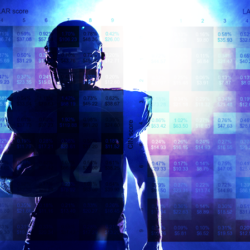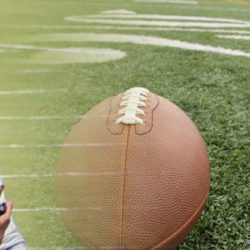
On December 20, 2015, the New York Giants were set to face the undefeated Carolina Panthers.
The game had huge implications for the Giants’ season – with just 3 games remaining in the season, they came into it tied with the Eagles and Redskins for the best record in the underwhelming NFC East. To keep their playoff hopes alive, the Giants would have to find a way to beat one of the NFL’s best teams.
After trailing 35-7, the Giants staged a furious comeback and found themselves down just 35-21 late in the fourth quarter. Then, Eli Manning hit Shane Vereen for a touchdown pass to narrow the gap to 35-27.
At this point, Tom Coughlin sent out their kicker, Josh Brown, to kick the extra point, and the Giants went back to work trying to tie the game and get it to overtime. Going for the extra point in this situation wasn’t the right decision, but coaches in the NFL and NCAA make similar errors on a weekly basis. In this particular game, the Giants did score another touchdown and tie the game, but Carolina ended with a last minute field goal to win the game in regulation. However, the outcome doesn’t change the fact that Coughlin made a serious coaching error that significantly reduced the probability of a Giants win.
Why does such a big blunder continue to occur? We should start by examining the different scenarios that can happen. When you kick the extra point, you are essentially minimizing both the chances of a win and a loss during regulation time, thereby pushing all of your chips into tying the game and playing an overtime period. However, if it is 35-27 and you score a two point conversion, you are only down by 6 points and would just need a touchdown and an extra point to win the game. If you fail on your two point conversion, you would have a second opportunity to go for two points on your next touchdown and potentially tie the game.
What are the chances of making an extra point or two point conversion? The NFL moved the extra point from a near automatic proposition to the 15 yard line this year, and in over 1000 kicks the success rate has been 94.1%. Meanwhile, NFL teams have gone for two point conversions 320 times over the past 5 years at a 47.8% success rate. Looking back further, from 2000-2009 the success rate was 47.9% for two point conversions on 718 attempts – the odds of success have held constant over a long period of time. For the purposes of this comparison, we will assume each team is 50% to win in overtime (which is slightly generous for the underdog Giants).
Kicking the extra point and going for two each has 4 distinct possibilities (assuming independence):

As you can see, by going for two you just added over 13% to your chances of winning the game in the cases where you score again rather than playing for overtime! Football coaches are notorious for poring over hours of game film to find the slightest amount of edge. Plus, they have statisticians on staff who certainly must have pointed out that this added win probability exists. So why don’t coaches go for it?
The reason that coaches such as Tom Coughlin routinely pass this up is because of risk aversion. The coaches are not looking at all of the times that they win the game – instead they are looking at all of the times when they lose the game. In the scenario above, if Tom Coughlin goes for a two point conversion, he has a 27% chance of losing the game in regulation when he could have easily opted for overtime – losing becomes his fault. Meanwhile, he has a 9% chance of losing the game in regulation when he opts for an extra point – and these times are not his fault, it is the kicker’s fault. The talk radio stations and back pages of the newspaper can be unforgiving to coaches and cost them their jobs by turning fan opinion, and while coaches are interested in winning they are also invested in keeping their jobs.
At SIG, we are aware that even the best trades can go against you while negative expectancy trades can pay off. We are constantly striving to make as many positive expectancy trades as we can while attempting to maximize expected value in our trading opportunities. We would always go for two and increase our chances of winning the game by 13%, even if that means that the number of times that we could come out losing in regulation increases as well.




Subscribe Now
Get each new post sent straight to your inbox
We appreciate you taking the time to read our blog and share your feedback. Please be respectful and keep your comments as useful and relevant as possible. We reserve the right to remove comments that contain harassment, offensive language, or are promotional in nature.
Comments are closed.